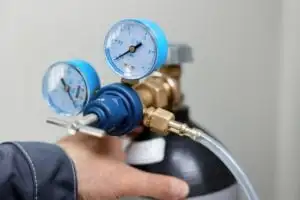In the world of industrial gas production, nitrogen plays a vital role in a wide range of applications. From food packaging to electronics manufacturing, nitrogen is essential for maintaining product quality, preventing oxidation, and improving safety. One of the most commonly used methods for nitrogen production is the Pressure Swing Adsorption (PSA) process. However, like any complex industrial process, PSA nitrogen plants can encounter various issues that impact their efficiency and output. In this comprehensive guide, we will explore some common problems faced by nitrogen PSA plants and provide insights on how to overcome them.
-
Adsorbent Deactivation: The Silent Efficiency Killer
In a nitrogen PSA plant, adsorbents are responsible for separating nitrogen from other gases present in the air. Over time, these adsorbents can lose their effectiveness due to a phenomenon called deactivation. This leads to reduced nitrogen purity and lower overall plant efficiency. There are several factors that contribute to adsorbent deactivation, including moisture, temperature, and contaminants.
To mitigate this issue, it is crucial to implement proper filtration systems to remove moisture and contaminants from the feed air. Additionally, regular maintenance and replacement of adsorbents are essential to ensure optimal performance. By monitoring the condition of adsorbents and taking proactive measures, nitrogen PSA plants can maintain high purity levels and improve their productivity.
-
Pressure Loss: Maximising Efficiency
Pressure loss is another significant challenge faced by nitrogen PSA plants. As the feed air passes through the adsorption beds, friction and other factors can cause a drop in pressure. This pressure loss not only reduces the overall efficiency of the process but also increases energy consumption.
To minimise pressure loss, engineers need to carefully design the system layout and optimise the size and shape of the adsorption beds. By reducing the flow path length and implementing efficient distribution mechanisms, it is possible to achieve better airflow distribution and minimise pressure drop. Regular monitoring of pressure differentials across the adsorption beds is also crucial for identifying potential issues and taking corrective actions.
-
Thermal Management: Tackling Heat Build-Up
During the adsorption and desorption phases, the PSA process generates a significant amount of heat. If not managed properly, this heat build-up can lead to temperature spikes, affecting the adsorbent’s performance and overall system stability. Additionally, excessive heat can increase energy consumption and put additional strain on the equipment.
To tackle thermal management effectively, engineers can employ various strategies. Implementing efficient heat exchangers, insulation, and cooling mechanisms can help dissipate heat and maintain stable operating temperatures. Additionally, optimising cycle times and introducing temperature control systems can prevent overheating and ensure consistent performance.
-
Compressor Issues: Addressing the Heart of the System
The compressor is the heart of a nitrogen PSA plant, as it provides the necessary pressure for the adsorption and desorption processes. Any malfunction or inefficiency in the compressor can have a significant impact on the overall system performance. Common compressor issues include oil contamination, leakage, and mechanical failures.
Regular maintenance and monitoring of the compressor are essential to prevent these issues. This includes routine inspections, oil analysis, and checking for air and gas leaks. Adequate lubrication and timely replacement of worn-out components are crucial for ensuring optimal compressor performance and extending its lifespan.
-
Safety Concerns: Prioritising Operational Excellence
Operating a nitrogen PSA plant involves potential safety risks, especially when handling high pressures and flammable gases. Maintaining a strong focus on safety protocols and operational excellence is paramount to protect personnel and assets.
Comprehensive safety training for plant operators, stringent adherence to safety standards, and regular equipment inspections are fundamental to mitigating risks. Implementing redundant safety measures such as pressure relief valves, emergency shutdown systems, and gas detection systems
